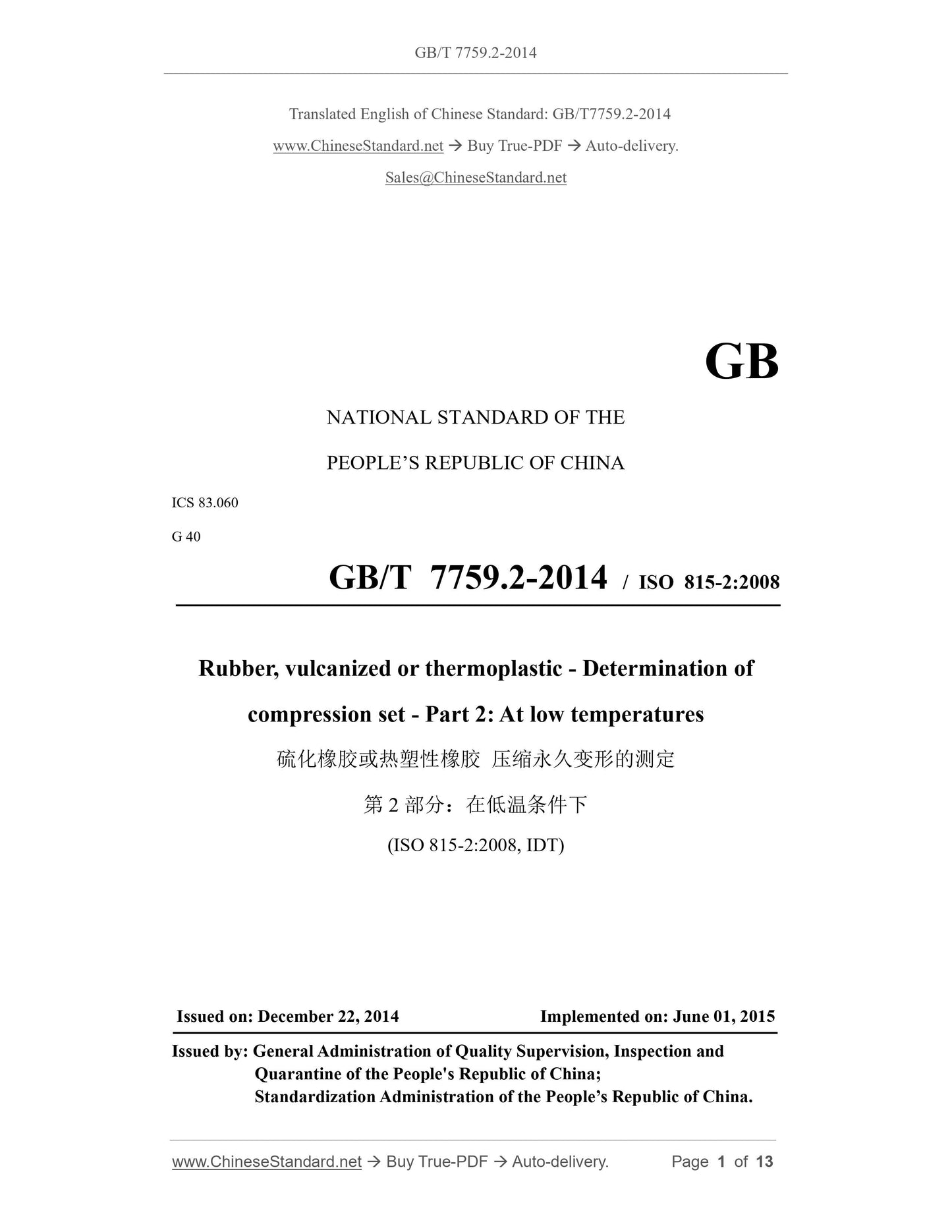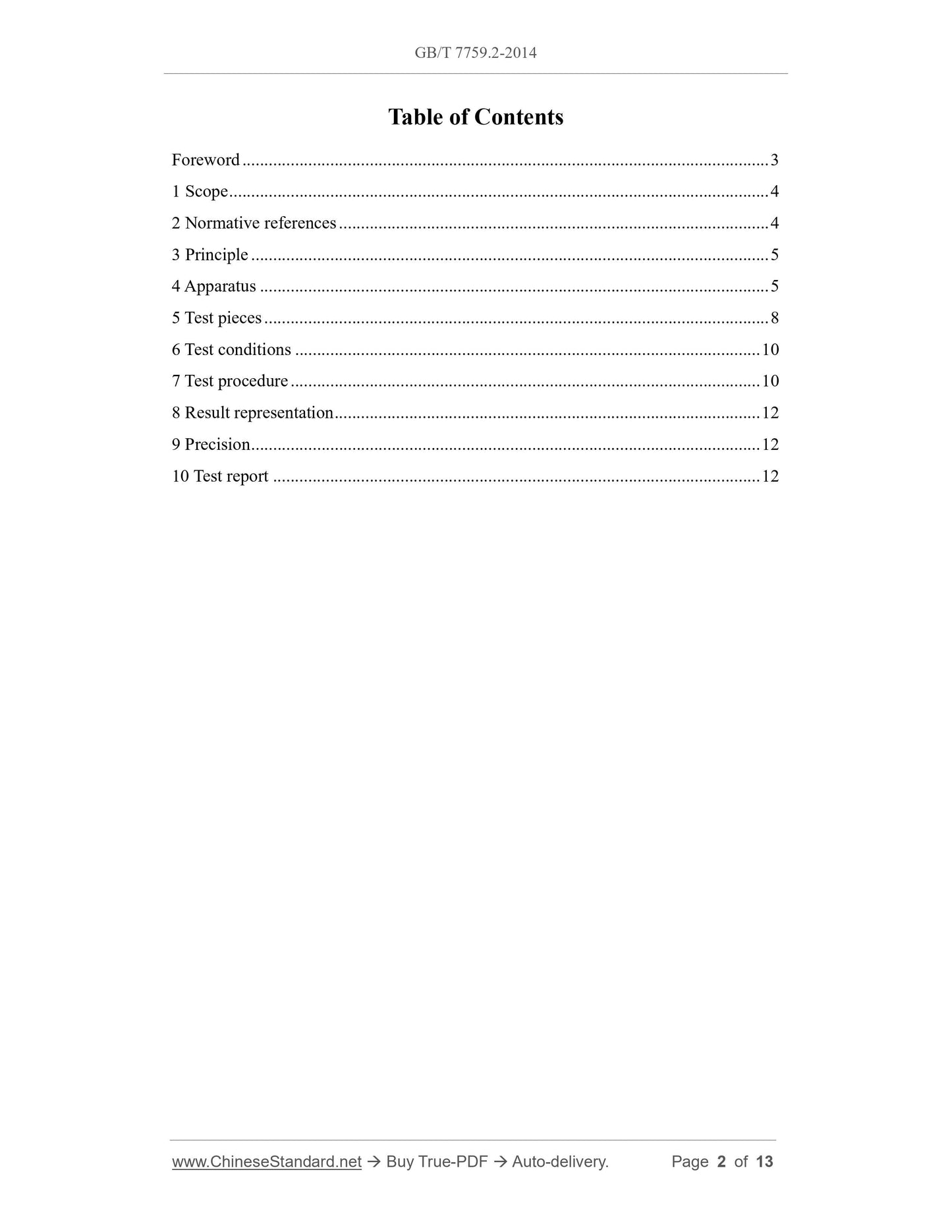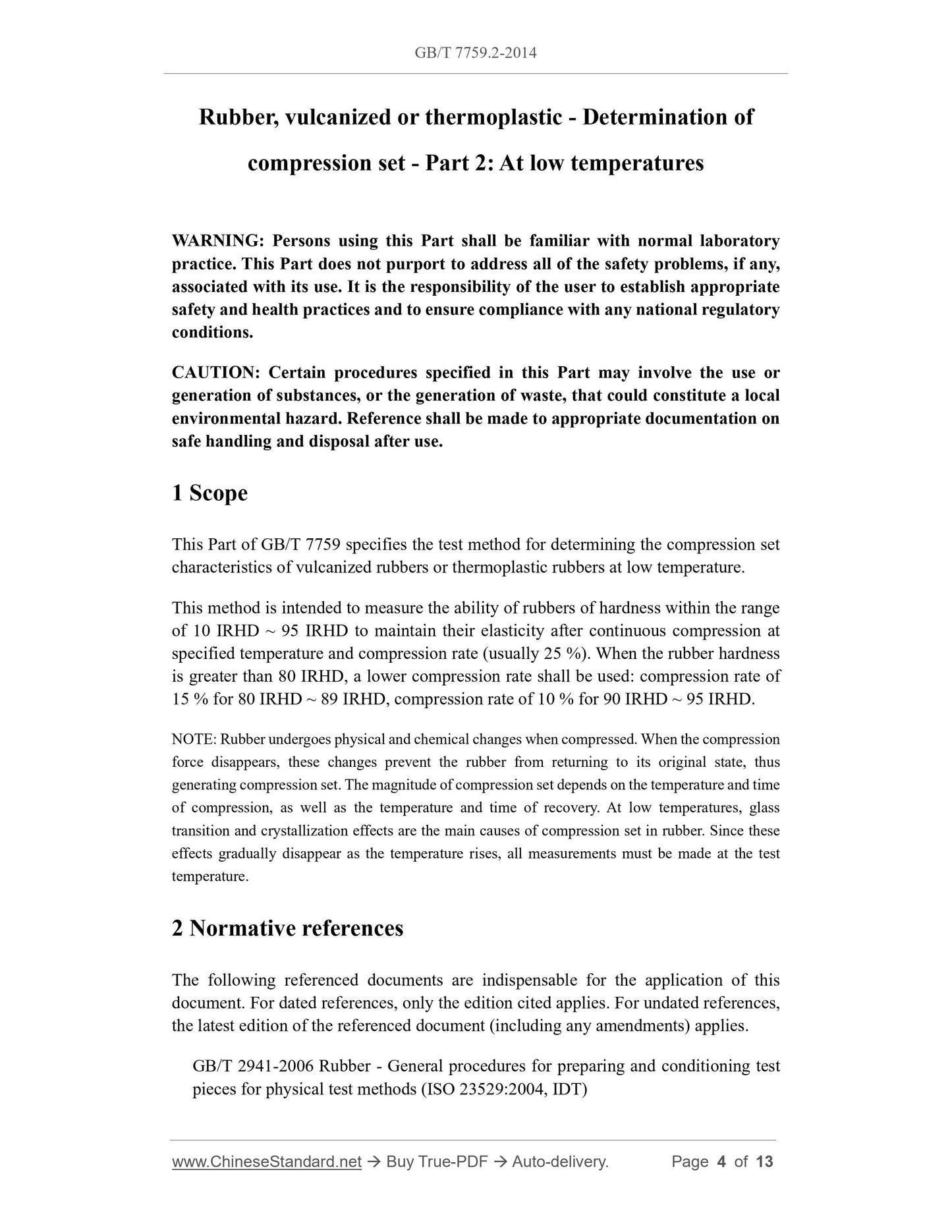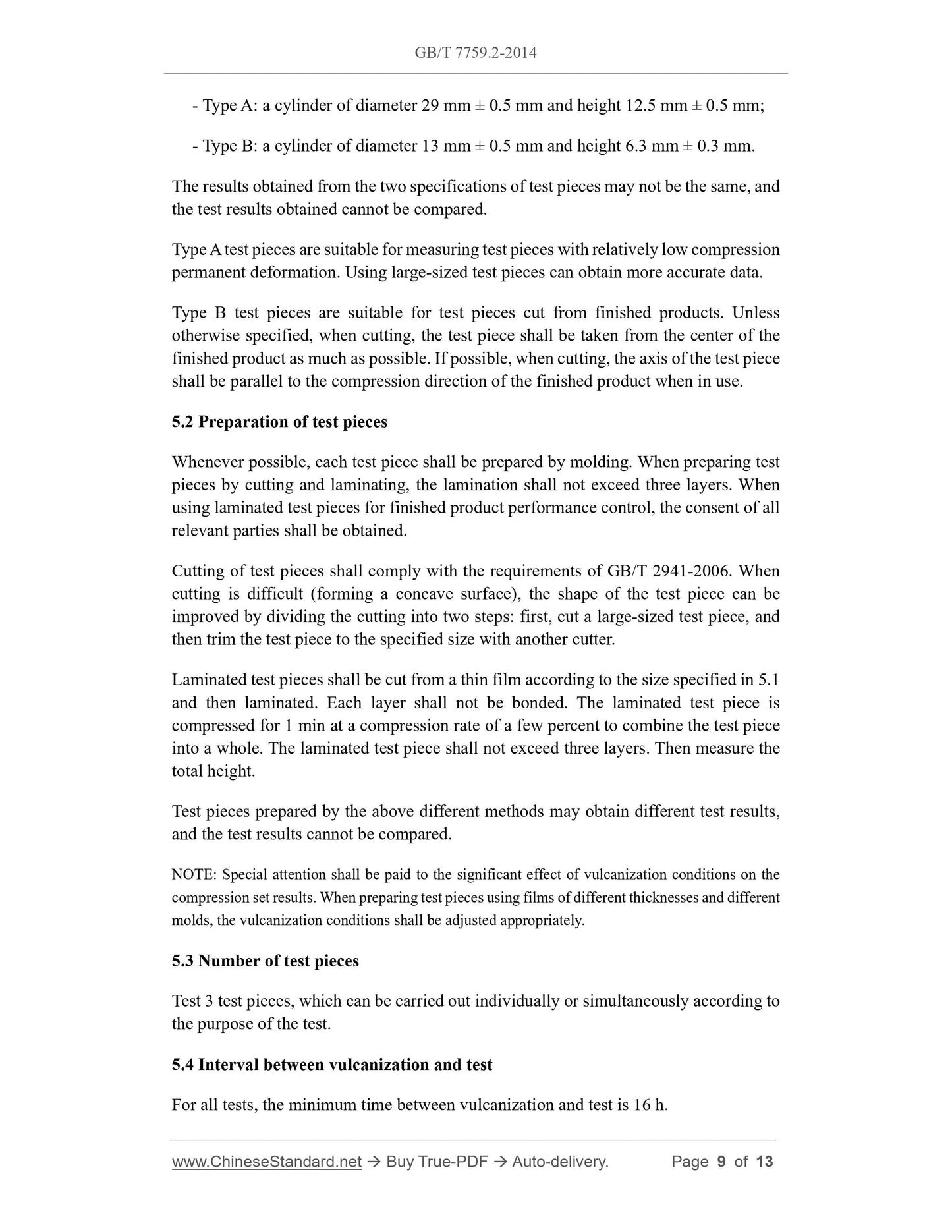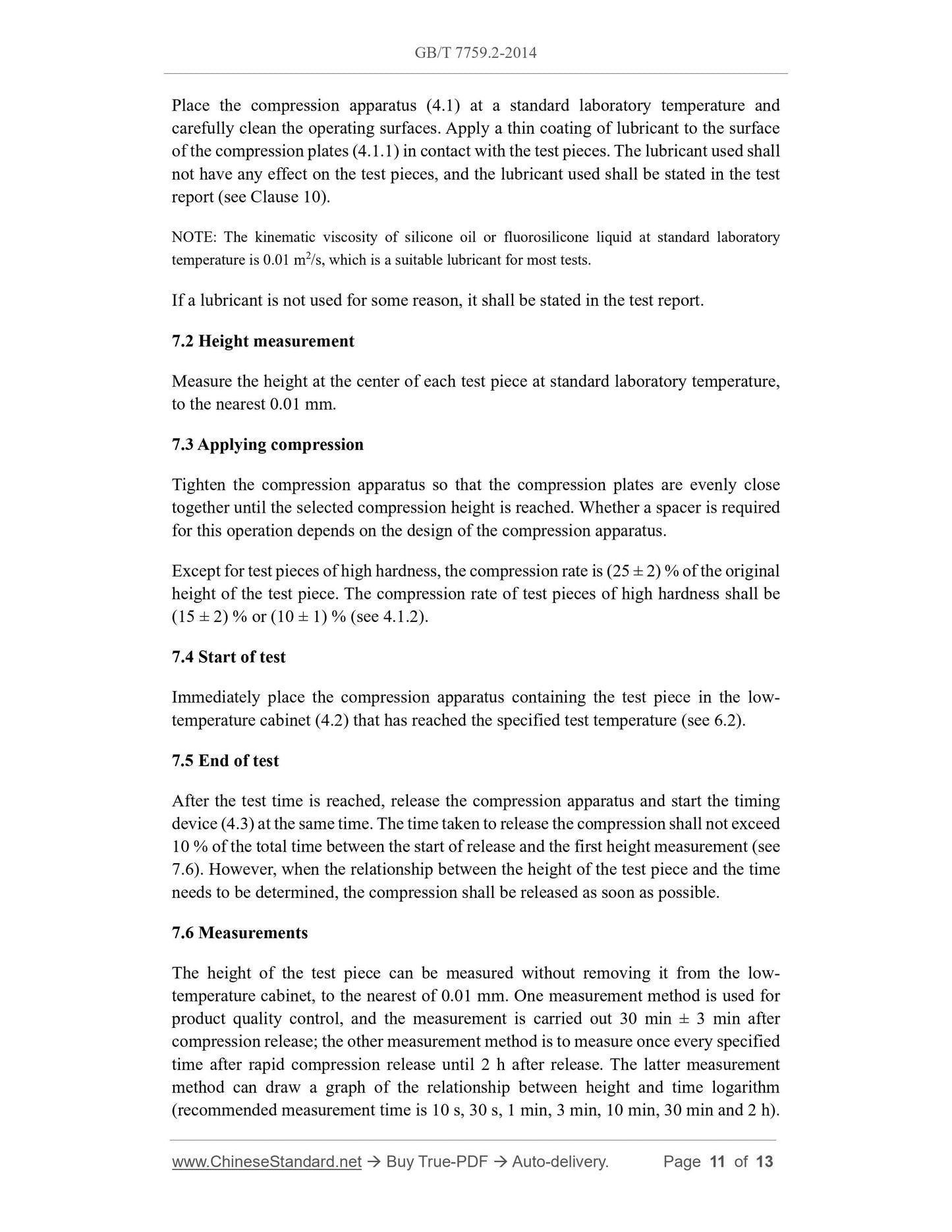1
/
of
5
www.ChineseStandard.us -- Field Test Asia Pte. Ltd.
GB/T 7759.2-2014 English PDF (GB/T7759.2-2014)
GB/T 7759.2-2014 English PDF (GB/T7759.2-2014)
Regular price
$65.00
Regular price
Sale price
$65.00
Unit price
/
per
Shipping calculated at checkout.
Couldn't load pickup availability
GB/T 7759.2-2014: Rubber, Vulcanized or thermoplastic -- Determination of compression set at low temperatures
Delivery: 9 seconds. Download (and Email) true-PDF + Invoice.Get Quotation: Click GB/T 7759.2-2014 (Self-service in 1-minute)
Newer / historical versions: GB/T 7759.2-2014
Preview True-PDF
Scope
This Part of GB/T 7759 specifies the test method for determining the compression setcharacteristics of vulcanized rubbers or thermoplastic rubbers at low temperature.
This method is intended to measure the ability of rubbers of hardness within the range
of 10 IRHD ~ 95 IRHD to maintain their elasticity after continuous compression at
specified temperature and compression rate (usually 25 %). When the rubber hardness
is greater than 80 IRHD, a lower compression rate shall be used: compression rate of
15 % for 80 IRHD ~ 89 IRHD, compression rate of 10 % for 90 IRHD ~ 95 IRHD.
NOTE: Rubber undergoes physical and chemical changes when compressed. When the compression
force disappears, these changes prevent the rubber from returning to its original state, thus
generating compression set. The magnitude of compression set depends on the temperature and time
of compression, as well as the temperature and time of recovery. At low temperatures, glass
transition and crystallization effects are the main causes of compression set in rubber. Since these
effects gradually disappear as the temperature rises, all measurements must be made at the test
temperature.
Basic Data
| Standard ID | GB/T 7759.2-2014 (GB/T7759.2-2014) |
| Description (Translated English) | Rubber, Vulcanized or thermoplastic -- Determination of compression set at low temperatures |
| Sector / Industry | National Standard (Recommended) |
| Classification of Chinese Standard | G40 |
| Classification of International Standard | 83.060 |
| Word Count Estimation | 10,159 |
| Date of Issue | 12/12/2014 |
| Date of Implementation | 6/1/2015 |
| Older Standard (superseded by this standard) | GB/T 7759-1996 |
| Quoted Standard | GB/T 2941-2006; ISO 4287 |
| Adopted Standard | ISO 815-2-2008, IDT |
| Regulation (derived from) | National Standards Bulletin 2014 No. 30 |
| Issuing agency(ies) | General Administration of Quality Supervision, Inspection and Quarantine of the People's Republic of China, Standardization Administration of the People's Republic of China |
| Summary | This Standard specifies the determination of vulcanized rubber or thermoplastic rubber test methods of compression set properties at low temperatures. This Standard is used to measure the hardness in the range 10IRHD ~ 95IRHD rubber under specified condit |
Share
